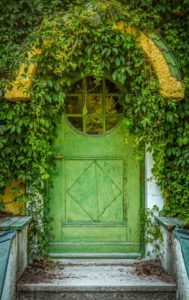However, could these abandoned places and green spaces be rescued and turned into a natural phenomenon? According to a couple of articles I read this week, that is exactly what’s happening.
The first article I read highlights France’s first private nature reserve: Le Grand Barry. Set up by ASPAS (Association for the Protection of Wild Animals) in the rolling foothills of the Alps, the reserve accepts not public subsidiaries, and carefully chooses its private donors. This is to ensure that it’s mission – to allow true wilderness to develop away from interference- is not endangered or altered in any way. Since 2010, the organisation has been fundraising and buying land for exactly this purpose. They now have a total of 300 hectares of wilderness, including sites in Haute Loire Auvergne and Côtes d’Armor, Brittany, and in February of this year ASPAS joined the organisation Rewilding Europe, a network of 27 reserves with an aim that by 2020, there will be over 1million hectares of wilderness the country.
These wilderness sites are not closed to the public, but visitors are required to adhere to specific rules: keep to the designated foot paths, all dogs kept on lead, no harvesting the land (so don’t pick that pretty flower), and fishing, hunting, barbecues, fires, vehicles, logging and stock raising are all banned. As well as rules for visitors, there are rules for those who are responsible for the sites. The most important rule, is that nature must be allowed to take its course. No pesticides, weeding, cultivating, or otherwise “helping” as it were. Often when we help one part of nature, we hinder another: think of how we cut back vines and weeds that might actually be food or shelter for tiny organisms. For that reason the land is purchased and returned to a suitable state, then literally just left to its own devices.
Similarly, an abandoned life boat station in Selsey has become an unlikely underwater nature reserve. As I said earlier, the drive to Colchester on the A12 hosts a number of derelict buildings and as it is a drive I complete fairly often, I have become interested in the vast number of fascinating derelict structures around the world. It was during one of my browsing sessions that I came across the article about an abandoned life boat station in Selsey.
The author spent some time exploring the underwater world around and beneath the old life boat station at East Beach, Selsey, and describes in joyful detail the number of unusual creatures that have made their home there. Sponges, tubeworms and various types of anemone are just a few of the marine creatures mentioned as taking up residence, and it led me to consider the idea that some of our unloved structures could in fact become very important to our future.
Those partially or fully submerged could become a haven for much-disturbed marine life, whilst those on dry land could well become part of projects to encourage nesting birds. Perhaps for this reason, we should consider helping conservation projects to purchase derelict land and turn it into an impromptu nature reserve, easing the problem of constant destruction of nature’s safe holds and finding a much better use for the unloved spaces that litter out planet.
Another wonderful example I have come across is that of “Sydney’s Floating Forest”; the SS Ayrfield. Located in Homebush Bay, a short distance from Sydney, the gigantic ship was sent to the bay for breaking down in 1972. However, for some reason it never was broken down and instead grew into a floating fortress of trees, plants and bushes. Thanks to it’s new life as some kind of nature reserve, it is unlikely to be disturbed for many years, if at all. Other ships litter the bay in a morbid version of a ship graveyard and yet few have grown any vegetation at all, leaving the marvel of the SS Ayrfield to fascinate many a tourist and nature lover.
This incredible display of nature’s persistence should serve as an example of the many ways we could help nature to help itself, merely by leaving it alone.
The articles are here:
http://www.theguardian.com/environment/ … sey-sussex
http://www.theguardian.com/environment/ … rve-france
http://www.mymodernmet.com/profiles/blo … ing-forest
As always, for help and advice please contact us:
London & South East 020 3432 2854
Midlands 01332 896 478
Wales & West 029 2000 4623
Web: www.assent1.com Follow @assent1 on Twitter. Like Assent on Facebook.
Associate Enterprises Limited t/a
Assent
Office: 1st Floor, 120 London Road,
Benfleet, Essex SS7 5SQ


